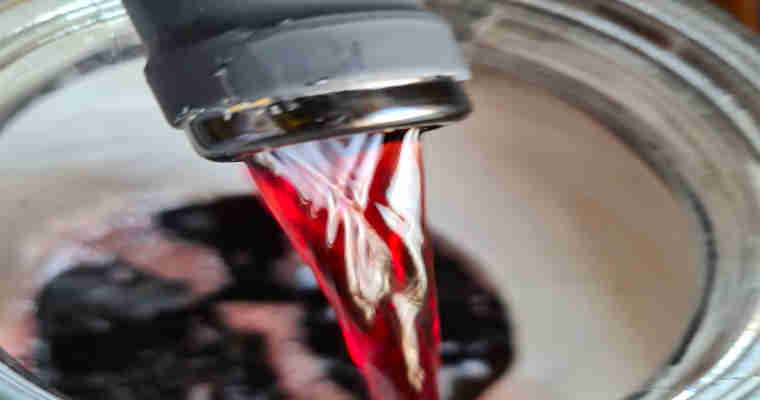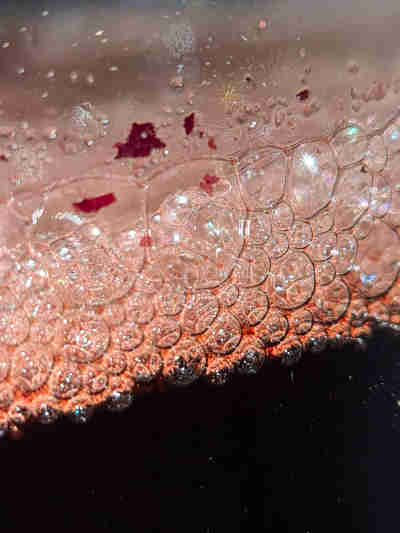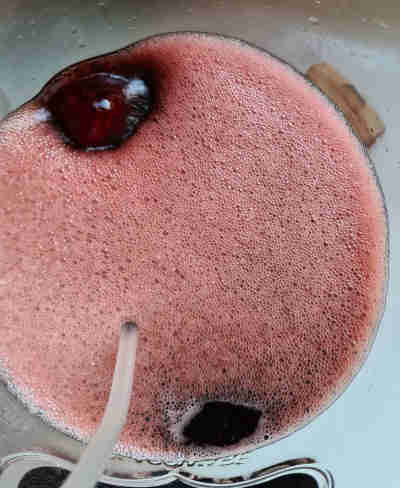It is time to try another recipe from one of my top 5 fermentation books, The Noma Guide to Fermentation. After I tried the fermented plums and the
I had never made vinegar before and If you are asking yourself why I decided to make homemade red wine vinegar? The answer, two amazing books.
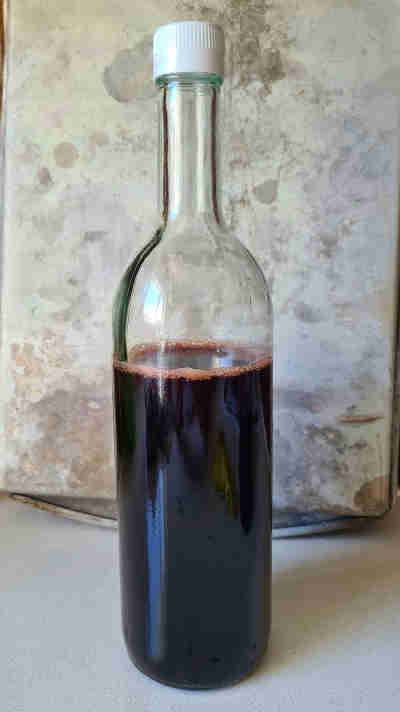
The first book is Salt, Fat, Acid, Heat: Mastering the Elements of Good Cooking by Samin Nosrat. Salt, Fat, Acid, Heat is not a regular cookbook; it is a cooking book. This book teaches you methods and how-to techniques. The acid section completely enlightened me and was my favorite.
The second book is The Noma Guide to Fermentation, which contains a section on
What I particularly like about The Noma guide of fermentation is that it takes the time to go into in-depth explanations. Many of its recipes have photos that illustrate what your ferment should look like over days, weeks, and even months, which is helpful if you are worried that what you’re making is going sideways.
Good red wine vinegar is hard to find. So, I decided to make my own. I love using vinegar because of what acid does to your food; is it balances flavors. Vinegar adds all-important tartness and freshness to practically anything.
The process
I got started when a friend gave me a piece of “mother,” which resembles a gelatinous disc that looks like a slice of wobbly raw liver. It’s this mother, the live starter, that transforms the alcohol in the wine into vinegar (acetic acid) through alcoholic fermentation and bacterial activity, with an assist from oxygen.
When making different types of vinegar that are mostly from fruit, I first make alcohol through the fermentation of natural sugars that are in the fruit into alcohol. Then ferment that alcohol into acetic acid with the help of acetic acid bacteria (AAB).

For this red wine vinegar, I used the quick method that is recommended in the Noma book. That method requires an air pump and air stone, which you can find at a pet store or online.
I decided to do the quick method because, If you were to pour the red wine into a fermentation vessel, cover it with cheesecloth, and leave them on the counter, you would eventually have ren wine vinegar. This process you will need to wait around 3 to 4 months for the wine to acidify properly through wild fermentation. But I’m too eager to see what my homemade red wine vinegar will taste like.
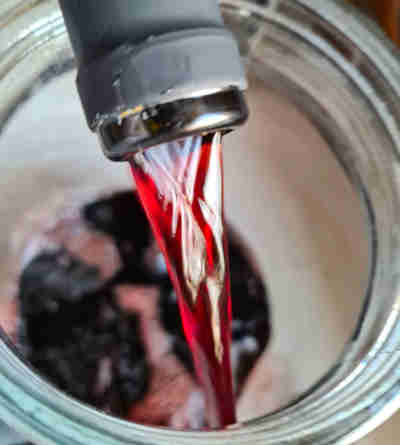
First thing, you pour the red wine into a fermentation vessel. Place the air stone that is connected to the hose into the wine. connected to the hose to the air pump and cover the vessel with cheesecloth. Plug-in your air pump and leave the red wine to ferment in a dark place and at room temperature.
This process takes around 10 to 14 days. I Started tasting the vinegar after week. If the taste of alcohol is still noticeable and it is not fully vinegar-y, the vinegar needs to ferment for more time. In addition, you can use a pH meter to test the pH level of your vinegar. The pH range that you are aiming to is 3.5 to 4.
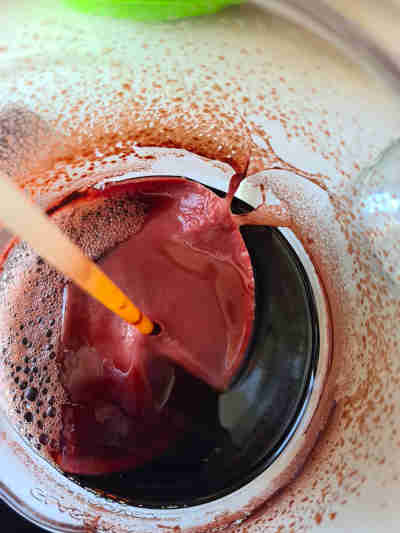
“Mother of vinegar”
There is a chance that on the surface of the vinegar will develop a type of vinegar SCOBY, a gelatinous disc that looks like a slice of wobbly raw liver. That SCOBY is actually called “Mother of vinegar”. If it develops it is grate. It means that your vinegar is doing well.
After two weeks and when you are happy with the taste of the vinegar, strain your red wine vinegar and store it in bottles. The vinegar is perfectly shelf-stable if it’s not exposed to air.
Red Wine vinegar
The equipment you need to make red wine vinegar is:
- fermentation vessel (preferably glass)
- kitchen towel
- rubber bands
- air pump
- air stone (a piece of porous rock diffuses air in small bubbles)
Ingredients
- 2 bottles of good red wine
- Pour the red wine into the fermentation vessel.
- Backslop with unpasteurized vinegar.
- Place the air stone in the liquid so it rests on the bottom of the vessel and run the hose out the top to the air pump.
- Cover the vessel with cheesecloth and secure it with a rubber band.
- Ferment the wine vinegar for 10 to 14 days, tasting frequently. When you can no longer taste the alcohol and the vinegar is “vinegary”, strain the wine.
- Safe aside the mother of vinegar with 2-3 cups of vinegar, as a starter for the next you make vinegar.
- Store in capped bottles.
This site is a participant in the Amazon Services LLC Associates Program and contains affiliate links to products. We may receive a commission for purchases made through these links.
